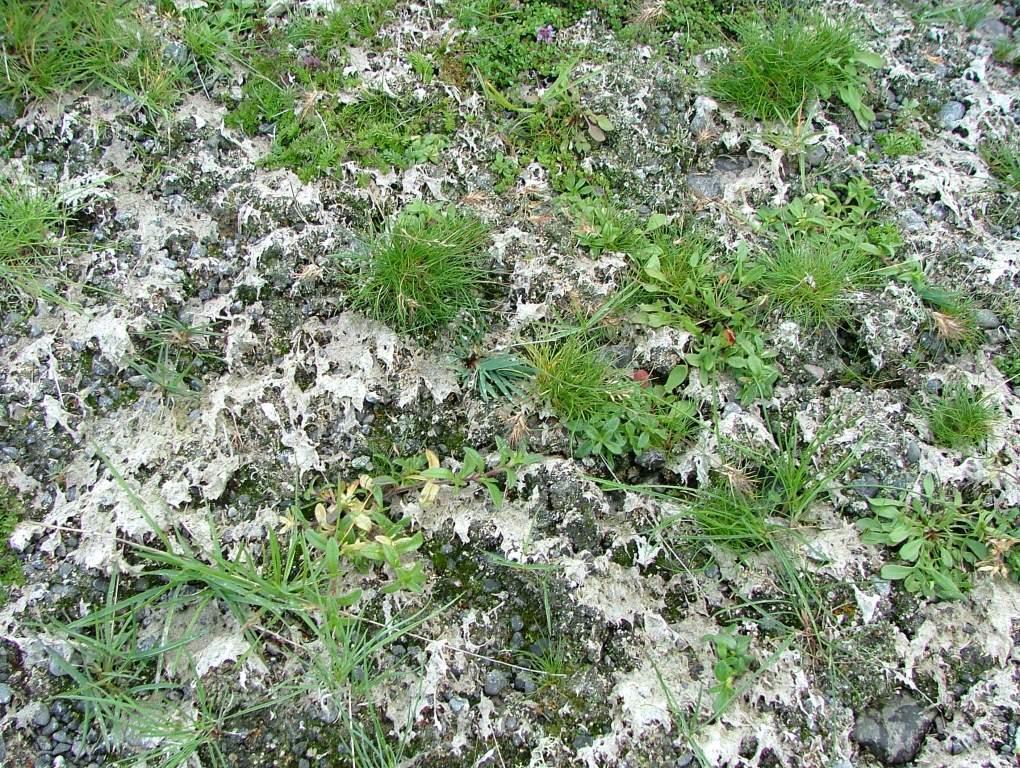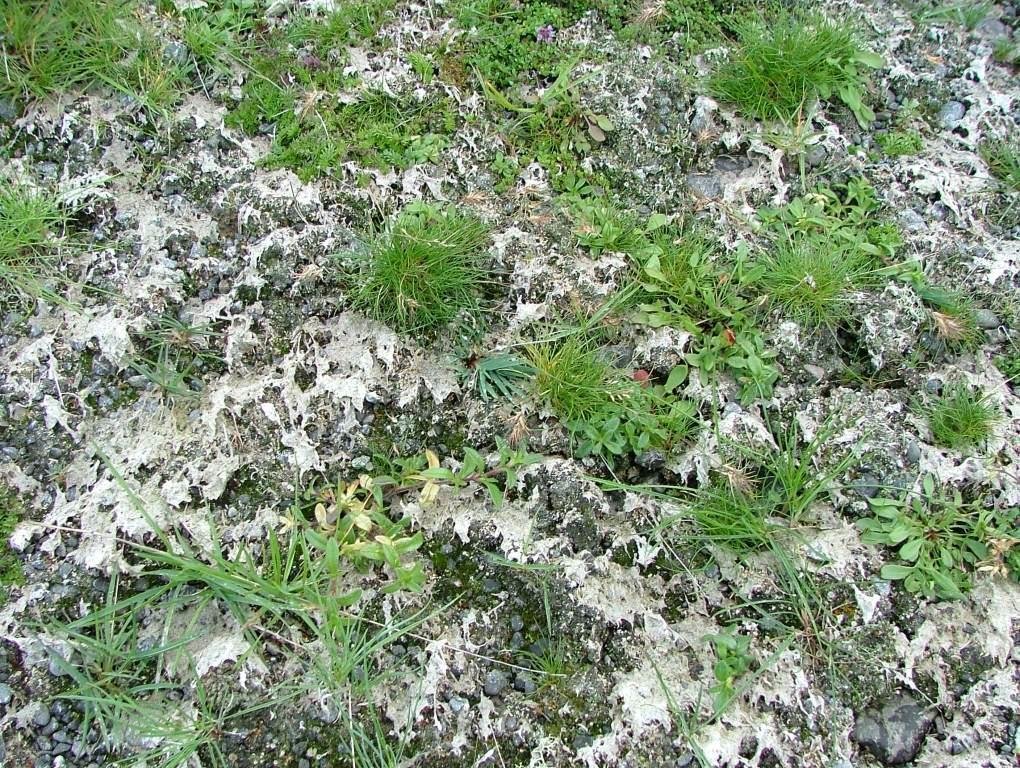Applying organic residuals on denuded areas [Iceland]
- Creation:
- Update:
- Compiler: Thorunn Petursdottir
- Editor: –
- Reviewers: Fabian Ottiger, Alexandra Gavilano
Restoration with organic residuals
technologies_1761 - Iceland
View sections
Expand all Collapse all1. General information
1.2 Contact details of resource persons and institutions involved in the assessment and documentation of the Technology
Name of project which facilitated the documentation/ evaluation of the Technology (if relevant)
Preventing and Remediating degradation of soils in Europe through Land Care (EU-RECARE )Name of the institution(s) which facilitated the documentation/ evaluation of the Technology (if relevant)
Soil Conservation Service of Iceland (Soil Conservation Service of Iceland) - Iceland1.3 Conditions regarding the use of data documented through WOCAT
The compiler and key resource person(s) accept the conditions regarding the use of data documented through WOCAT:
Ja
2. Description of the SLM Technology
2.1 Short description of the Technology
Definition of the Technology:
Applying organic residuals on denuded ares
2.2 Detailed description of the Technology
Description:
The concerning rangelands are severely degraded and parts of them have even lost their topsoil layer entirely. Nevertheless, in many cases some remnant vegetation patches are still in place and can serve as seed banks during the restoration process. In order to stabilize the surface (i.e. to reduce the effects of freeze-thaw processes), provide nutrients to the system, increase water availability and facilitate the distribution of native species within the degraded areas, tractors are used to spread manure or hay over the denuded areas. All implementations are based on the methods and tools used in ecological restoration, aiming at re-activating environmental and ecological processes and increasing the resilience of the ecosystems undergoing restoration. Denuded patches, preferably close to the remaining vegetation "islands" are covered with organic matter in order to stabilize the surface, facilitate seed production and seed dispersal and provide safe sites for seed germination.
Purpose of the Technology: The purpose with the technology is to halt further land degradation and facilitate natural succession within the area undergoing restoration. In the long-term, it should substantially reduce wind and water erosion. It should also lead to increased biodiversity, enhanced water availability and accelerated carbon sequestration (in soil and vegetation). The overall restoration task is to increase the resilience of the ecosystems against natural hazards; such as volcanic activities.
Establishment / maintenance activities and inputs: In the year after the areas are treated, they are commonly treated with a low portion of inorganic fertilizer to add easily dissolvable nutrients to the seeds and seedling that have already germinated within the area. The fertilizing treatment is repeated approx biannually for 4-8 years on the average.
Natural / human environment: In the long-term, the technology is expected to substantially increase biomass production, re-build soil qualities, accelerate carbon sequestration and secure water availability within the rangeland and the adjacent ecosystems. The areas still grazed are expected to be more suitable for livestock grazing and the protected areas are expected to be of more recreational and aesthetic value. Increased vegetation cover will reduce and even halt the sand drift that still creates challenges for inhabitants in adjacent villages, on farmsteads and within the summerhouse clusters, scattered around the area. As the degraded rangeland is in the vicinity of an active volcano (Mt Hekla) the technology is also expected to increase ecosystem resilience against natural hazards like ash and pumice drift and reduce potential offsite damages caused by these materials.
2.3 Photos of the Technology
2.5 Country/ region/ locations where the Technology has been applied and which are covered by this assessment
Country:
Iceland
Region/ State/ Province:
Rangarthig Ytra
Further specification of location:
Rangarvellir
Comments:
Total area covered by the SLM Technology is 900 km2.
2.6 Date of implementation
If precise year is not known, indicate approximate date:
- more than 50 years ago (traditional)
2.7 Introduction of the Technology
Specify how the Technology was introduced:
- as part of a traditional system (> 50 years)
3. Classification of the SLM Technology
3.1 Main purpose(s) of the Technology
- reduce, prevent, restore land degradation
3.2 Current land use type(s) where the Technology is applied

Grazing land
- Extensive grazing

Unproductive land
Specify:
Wastelands, deserts, glaciers, swamps, recreation areas, etc
Comments:
Major land use problems (compiler’s opinion): Vast parts of the area are heavily degraded due to unsustainable land use through the centuries in combination to harsh climate and frequent volcanic eruptions. The major land use problem are related to the fact that the concerned ecosystems collapsed long time ago and despite all restoration efforts implemented within the area for over 100 years, the systems are still highly dysfunctional. Their carrying capacity is limited and even light livestock grazing can keep further vegetation succession down. Passive restoration might take place where the livestock grazing has been excluded but in most cases some technologies are needed to "kickstart" the ecosystem and break their negative resilience against changes.
Major land use problems (land users’ perception): They are fully aware that the ecosystems are in a poor condition and restoration is needed in order to push improvements forward. They acknowledge that grazing of collapsed ecosystems can maintain the dysfunctional of the systems and hinder ecological improvements. Nevertheless, in many cases they believe the harsh climate and volcanic activities are the main contributors to land degradation - that livestock grazing and the grazing carrying capacity of the rangeland are not fundamental issues in this context.
Future (final) land use (after implementation of SLM Technology): Grazing land: Ge: Extensive grazing land
3.3 Has land use changed due to the implementation of the Technology?
Has land use changed due to the implementation of the Technology?
- Yes (Please fill out the questions below with regard to the land use before implementation of the Technology)

Unproductive land
Specify:
Wastelands, deserts, glaciers, swamps, recreation areas, etc
3.5 SLM group to which the Technology belongs
- improved ground/ vegetation cover
3.6 SLM measures comprising the Technology

agronomic measures
- A1: Vegetation/ soil cover
- A2: Organic matter/ soil fertility
Comments:
Main measures: agronomic measures
3.7 Main types of land degradation addressed by the Technology

soil erosion by water
- Wt: loss of topsoil/ surface erosion
- Wo: offsite degradation effects

soil erosion by wind
- Et: loss of topsoil
- Eo: offsite degradation effects

biological degradation
- Bc: reduction of vegetation cover
- Bq: quantity/ biomass decline
- Bs: quality and species composition/ diversity decline

water degradation
- Hs: change in quantity of surface water
- Hg: change in groundwater/aquifer level
Comments:
Main type of degradation addressed: Wt: loss of topsoil / surface erosion, Et: loss of topsoil, Eo: offsite degradation effects, Bc: reduction of vegetation cover
Secondary types of degradation addressed: Wo: offsite degradation effects, Bq: quantity / biomass decline, Bs: quality and species composition /diversity decline, Hs: change in quantity of surface water, Hg: change in groundwater / aquifer level
3.8 Prevention, reduction, or restoration of land degradation
Comments:
Main goals: prevention of land degradation, mitigation / reduction of land degradation, rehabilitation / reclamation of denuded land
4. Technical specifications, implementation activities, inputs, and costs
4.1 Technical drawing of the Technology
Technical specifications (related to technical drawing):
An example of how old hay can effectively be distributed on denuded areas with the right equipment
Technical knowledge required for field staff / advisors: low
Technical knowledge required for land users: low
Author:
Sveinn Runolfsson
4.2 General information regarding the calculation of inputs and costs
other/ national currency (specify):
ISK
If relevant, indicate exchange rate from USD to local currency (e.g. 1 USD = 79.9 Brazilian Real): 1 USD =:
112.0
4.3 Establishment activities
| Activity | Timing (season) | |
|---|---|---|
| 1. | Spreading organic residuals |
4.4 Costs and inputs needed for establishment
| Specify input | Unit | Quantity | Costs per Unit | Total costs per input | % of costs borne by land users | |
|---|---|---|---|---|---|---|
| Equipment | Machine use | ha | 1.0 | 180.0 | 180.0 | 100.0 |
| Fertilizers and biocides | Compost/manure | ha | 1.0 | 42.0 | 42.0 | |
| Total costs for establishment of the Technology | 222.0 | |||||
| Total costs for establishment of the Technology in USD | 1.98 | |||||
Comments:
Duration of establishment phase: 1 month(s)
Life span of the organic residuals: 1 year
Number of parties sharing: 232
4.7 Most important factors affecting the costs
Describe the most determinate factors affecting the costs:
The most determinate factors affecting the cost are: 1) the machinery needed and 2) the distance of the eroded areas from the farmsteads
5. Natural and human environment
5.1 Climate
Annual rainfall
- < 250 mm
- 251-500 mm
- 501-750 mm
- 751-1,000 mm
- 1,001-1,500 mm
- 1,501-2,000 mm
- 2,001-3,000 mm
- 3,001-4,000 mm
- > 4,000 mm
Agro-climatic zone
- sub-humid
- semi-arid
Thermal climate class: boreal
Links and modules
Expand all Collapse allLinks
No links
Modules
No modules





